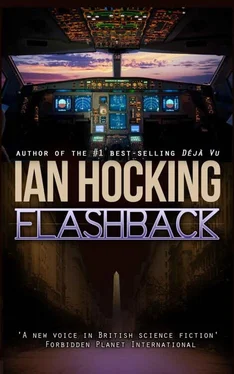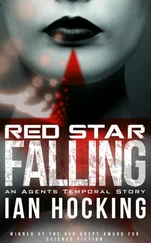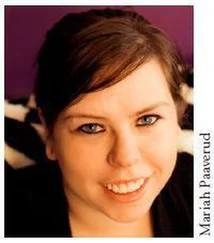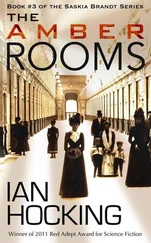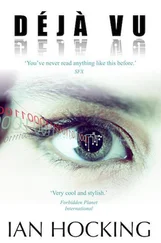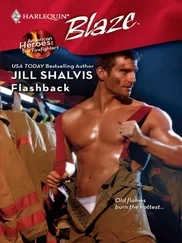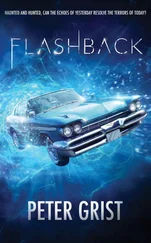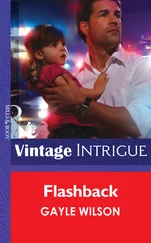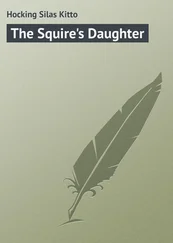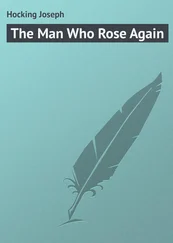Jem began to walk. ‘What’s south? Is this south?’
‘Yes.’
‘I feel sick.’
‘It’s Cory’s saliva.’
‘What?’
‘Coming up is a right turn onto Karl Marx Strasser. Please take it. Do you see a silver Volkswagen Golf? It should have a large blue logo along one side that reads interRENT. It will be parked near a hotel called the Gasthaus Edelweiss.’
‘Wait a minute. What do you mean, Cory’s saliva? Did he put a drug in his mouth and pass it to me?’
‘Do you see the car?’
‘Answer my question.’
The smallest of pauses. Jem kneaded her stomach.
‘Cory’s blood contains experimental nanoparticles in suspension. They are subject to his conscious control. The technology was developed by a group of industrialists building upon the work of a cancelled US military project. Dubbed ‘intelligent core’ or ‘I-Core’, it is known colloquially as ‘ichor’. Leaked documents suggest that the I-Core nanoparticles can build ad hoc structures within the host’s body, including electromagnetic transmitter-receivers, and chemical factories. Primarily, the nanoparticles function as a medical adjunct. Secondly, they optimise performance.’
‘Ichor, right.’ She steadied herself against a thin tree and saw the Gasthaus Edelweiss. It was dark but for a porch light near its sign. ‘Does Saskia have ichor?’
‘No.’
‘I see the car.’
‘Reach under the front bumper and retrieve a magnetised box. It contains a key. Tell me when you have entered the car.’
The interior of the Golf was chill. She sat on the passenger side, feeling stupid, one seat away from where she needed to be. She remembered the green eyes of a German woman in a café who had known nothing of an English stranger but who had, nonetheless, offered help in the recovery of a stolen passport. A series of older memories covered this one like dealt cards: Wolfgang smoking in bed; Wolfgang planning to turn Robin Hood and steal from the rich, which was to say Saskia Dorfer, to give to the poor, which was to say Wolfgang and Jem.
Jem watched her breath grey the windscreen.
Never follow me. Understand?
‘He asked about a ‘Cullinan Zero’. What did he mean?’
‘Just a moment. The term refers to a mythical counterpart to the Cullinan diamond, which is the world’s largest rough gem-quality diamond. The first polished gem made from the diamond was called the Cullinan I, or the Great Star of Africa, and was presented to King Edward VII in 1905 on his sixty-fourth birthday. The Cullinan II was a smaller cut from the remainder, the Cullinan III smaller still, and so on, until we reach the Cullinan IX. Rumours of a larger diamond began to circulate after the geologist who first examined the uncut Cullinan indicated that it was likely to comprise less than half of a larger, distorted octahedral crystal. However, the existence of the so-called ‘Cullinan Zero’ has never been independently established.’
Jem tried to put this into focus. ‘So he thinks I’ve stolen a diamond?’
‘Or know its whereabouts.’
‘Do you think Saskia knew?’
‘I don’t know.’
‘What do you know?’
‘Saskia may still be alive.’
Jem looked at the driver’s seat and felt the absence of her once lover.
‘Are you serious?’
‘You don’t need to believe me. Not yet.’
She looked for Cory on the white, blank street.
‘What if he let me leave, knowing I’d contact you? What if he’s watching me?’
Slowly, she turned to the back seat.
It was empty.
‘Ego?’ she continued. ‘What do you think?’
‘Jem, press the red button next to the satellite navigation device. This will connect you to a response specialist. Pretend that you’ve lost your swipe card. Try a Latvian accent. He or she will give a code that you must enter into the navigation device. This will start the car.’
Near Regensburg
Hrafn Óskarson lifted the peak of his yellow baseball cap and looked at the wall of the school’s assembly room. On it, Little Red Riding Hood fled through a paper forest. Hrafn turned away from the display and crossed the hall. He wondered why the memories of his childhood in Iceland quickened as he entered middle age. He could remember a morning in his tenth year when he and his younger brother Ragnar had raced to their aunt’s farm near Akureyri hoping to dissuade her from making their beloved rabbits into gloves. She had laughed at their naïvety, at the last of their childhood. This was not news. The rabbits had been born for gloves. Ragnar had cried all the long trip home while Hrafn had framed the experience as his first dose of adult medicine. Children petted rabbits; men wore rabbit gloves.
Why that? he thought. Why remember that, here, when I haven’t thought about it in years?
Hrafn took the passport from his jacket and rubbed away the blood from the gold-stamped title, which read Unione Europea Repubblica Italiana . Inside, the photograph showed a pretty woman with shoulder length, auburn hair. He let her eyes imprint his vision.
In the hours following the loss of DFU323, the Regensburg authorities had sent requests for assistance to the Federal Ministry of Transport, who in turn engaged the Federal Bureau of Aircraft Accident Investigation. The Gold Group of Dr Hrafn Óskarson—a veteran of sixteen inquiries—had been instructed to fly from Lower Saxony to Munich and rendezvous with specialists from Europe and the United States: external field investigation experts, psychologists, and engineers from Boeing. Meanwhile, disaster management teams in Regensburg set about requisitioning administrative offices for Gold Group, hangar space for wreckage, and, as an emergency morgue, a local primary school, where the dead now lay.
Hrafn crouched. Gently, he selected one of the two-dozen recovery bags that covered a third of the floorspace. Its zip moved with a low, throaty sound.
The smell: raw hamburger meat, aviation fuel, soil.
The smell recalled the closed investigations of his career. They formed a crossing, each like a stone in a brook, back to the night his Boeing 747 experienced an uncommanded rudder hardover on the approach to Singapore Changi Airport. The anxiety of the memory stung him even now. That roaring thought: No; not on my watch. The full starboard rudder lock would have put the 747 into the Singapore Strait in the time it took to take ten breaths. Only a rapid turn using the ailerons and a sudden push on the stick had saved the aircraft and its three hundred passengers. His luck had been astounding. He had repeated the manoeuvre a dozen times in the simulator and failed to bring her home.
The next day, during the pauses in his interview with safety investigators, Hrafn had composed his resignation letter. He returned, by land and sea, to that cold farm near Akureyri, where his aunt was preparing for the last months of her life. He went back to school and recovered his love of engineering. Five years later, having gained his PhD from the Swiss Federal Institute of Technology, he joined the FBAAI.
On a whiteboard next to the assembly hall door—here, among the art of children—a doctor had written, Mortui Vivis Praecipant .
Let the dead teach the living.
As Hrafn left the assembly room for the open air, he realised why he had recalled the memory of Ragnar and him hurrying to save the rabbits. Tomorrow would be his brother’s birthday.
~
Flurries of snow blazed in the glow of the temporary lights that ringed the playground. He passed police disaster cabins, parked fire engines, and the skyward satellite dishes of the media village. Nobody else was around. He stopped, just to appreciate the quiet. Then he pushed on. He was late for a meeting with Human Factors.
Читать дальше
